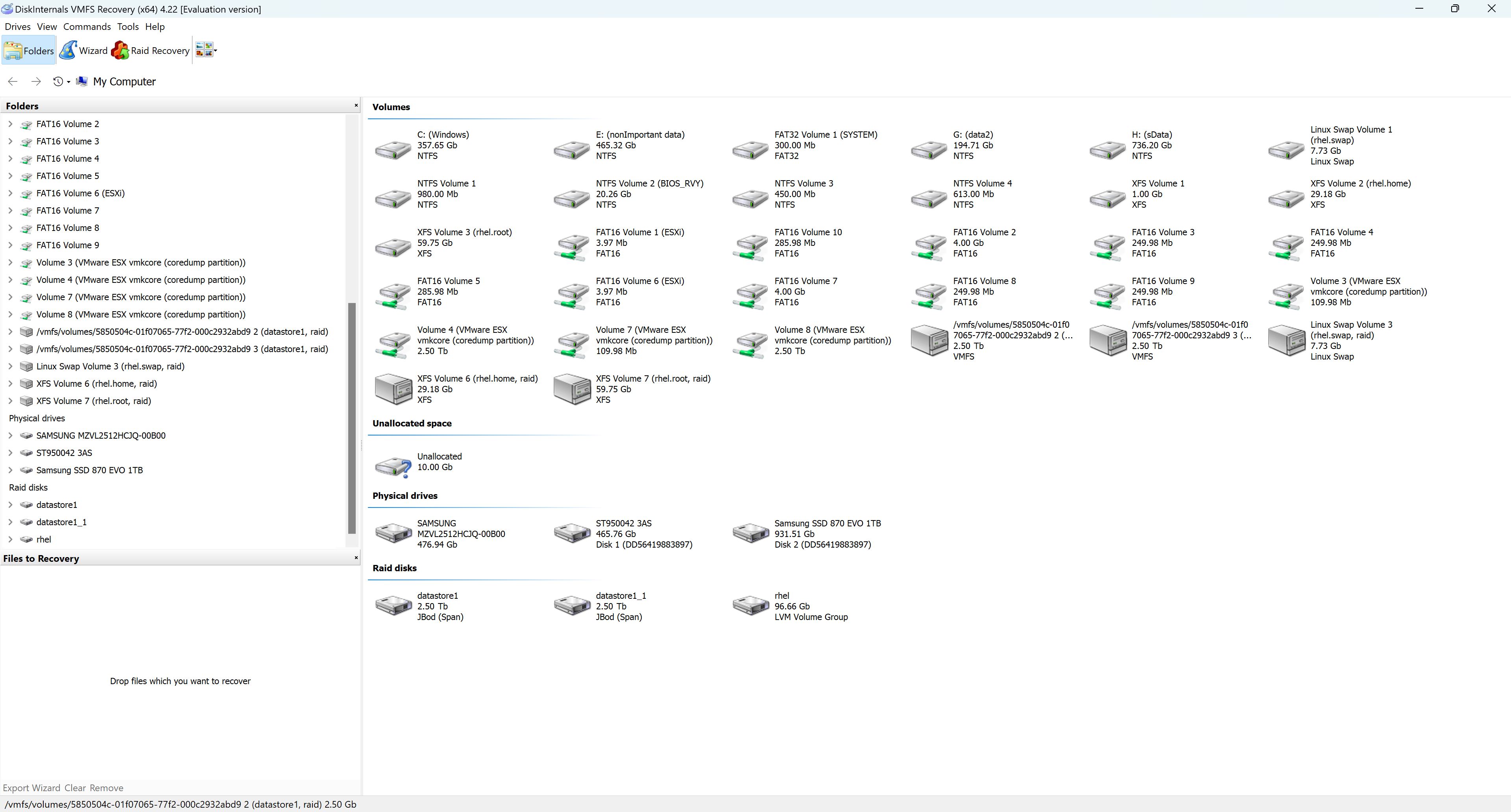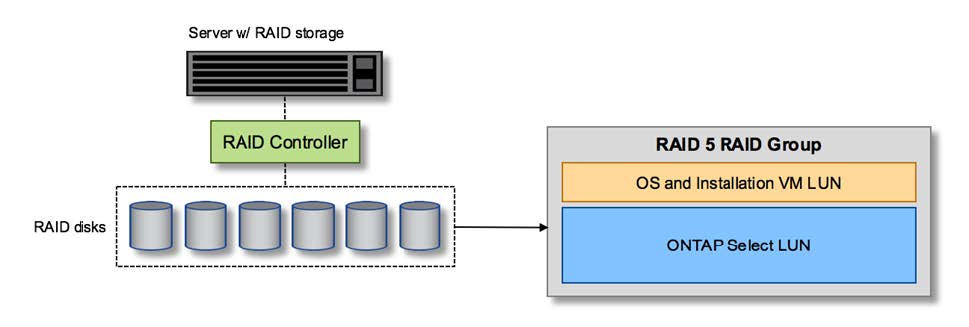

- #Esxi 6.5 raid 5 how to#
- #Esxi 6.5 raid 5 driver#
- #Esxi 6.5 raid 5 archive#
- #Esxi 6.5 raid 5 software#
You will need to replace the * with the host IP address.Īlternatively you can use WinSCP or some other utility to transfer the archive using SSH. As you can see in the image above the URL does not contain the IP address of the host. You can do that by entering the URL of the backup commands output into a web browser. Obviously storing the backup on the same device is not ideal so we need to transfer the archive off the host. The backup will be saved in /scratch/downloads The following image shows the output of the command. Once you have connected to the host via SSH, run the following command to backup the configuration: vim-cmd hostsvc/firmware/backup_config
#Esxi 6.5 raid 5 how to#
If you don’t know how to enable SSH, you can learn how in the following post: How to Connect to an ESXi 6.5 Host using SSH on Windows. Get Get IPMI System Event Log (SEL) properties.First of all, since this tutorial will be using the ESXi command line, you will need to connect to the host using SSH. f|-formatter= Override the formatter to use for a given command. Get Get IPMI Sensor Data Repository (SDR) properties. List List IPMI Field Replaceable Unit (FRU) inventory. n|-node= Specify which IPMI device (0.3) to query, defaults to Presented as hexidecimal characters joined without r|-include-raw Include a hex dump where the value of each byte is Space and its value is presented with two hexidecimalĬharacters using a leading zero if needed Include a hex dump where each byte is separated by a i|-ignore-missing Do not fail command if ipmi device is not present Get Get IPMI Field Replaceable Unit (FRU) device details. t|-hyperthreading Enable or disable hyperthreading (required) Set Set properties that are global to all CPUs. Get Get properties that are global to all CPUs. c|-cpu= The ID of the CPU to query for CPUID data (required) Get Disply the current hardware clock time. List List the boot device order, if available, for this List List active VMs associated with graphics devices. default-type= Host default graphics type. Refresh Refresh host graphics properties. Usage: esxcli graphics device stats list List List all of the graphics devices on this host. v|-vlan-id= The VLAN id for this nic, range '0 - 4095'(Reboot p|-priority= Priority class (0 - 7) to use for FCOE traffic V|-enable-vn2vn Enable or Disable VN2VN mode on the nic (Reboot Remove Initiate FCOE device destroy on behalf of an FCOE. Usage: esxcli fcoe nic enable Įnable Enable an FCOE-capable NIC if it is disabled. Usage: esxcli fcoe nic discover ĭiscover Initiate FCOE adapter discovery on behalf of an FCOE. n|-nic-name= The CNA adapter name (vmnicX) (required) Usage: esxcli fcoe nic disable ĭisable Disable rediscovery of FCOE storage on behalf of an The FCOE adapter name (vmhbaX) (required) Their namespace, object, command name and description. List This command will list all of the esxcli commands with Get Displays the name of the VIB that provided this esxcli Get Displays private stats of an elxnet nic

File will be generated on the targetĮSXi machine in case of remote esxcli invocations. f|-filepath= Absolute file path (must begin with "/") to copy Get Gets regdump (FAT dump) of an elxnet nic The address can beįound in the "PCI Device" column of the `esxcli p|-pcidevname= PCI SBDF address for an elxnet NIC.
#Esxi 6.5 raid 5 driver#
List Show driver status for specific devices. Get Display hardware location info for a device alias. Valid values are integer in the range 0-31. If multiple instances of the same device identifierĪre added. Unique number to address this instance of the device, Valid input is in reverseĭomain name format (e.g.
#Esxi 6.5 raid 5 software#
Here is the command line reference for the latest release of vSphere ESXi 6.5.ĭownload: esxi65-esxcli-command-reference.txt Usage: esxcli device add Īdd Add a device to enable a software device driver.ĭevice identifier from the device specification for I'm having a esxcli command line reference on my desktop since vSphere 5.x and I am using it quite often. You may need it for troubleshooting, configuration or for automated ESXi installations by using a kickstart file. ESXCLI is a powerful command line tool on an ESXi host.


 0 kommentar(er)
0 kommentar(er)
